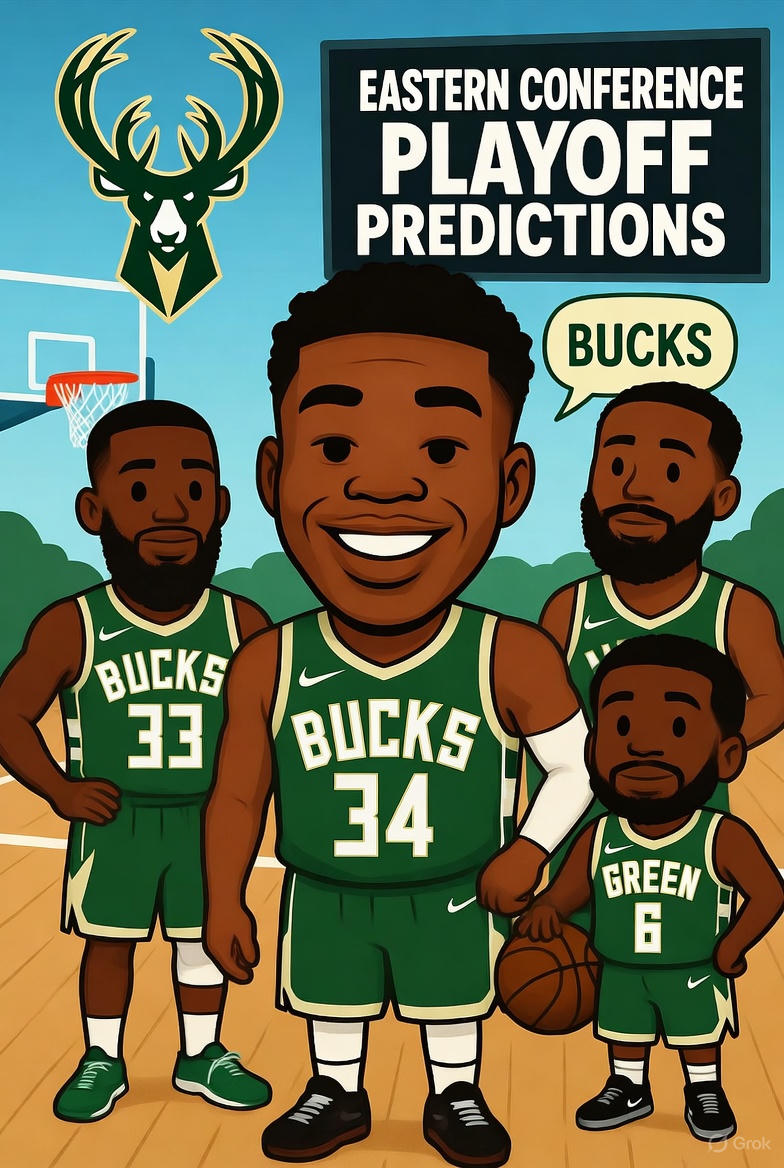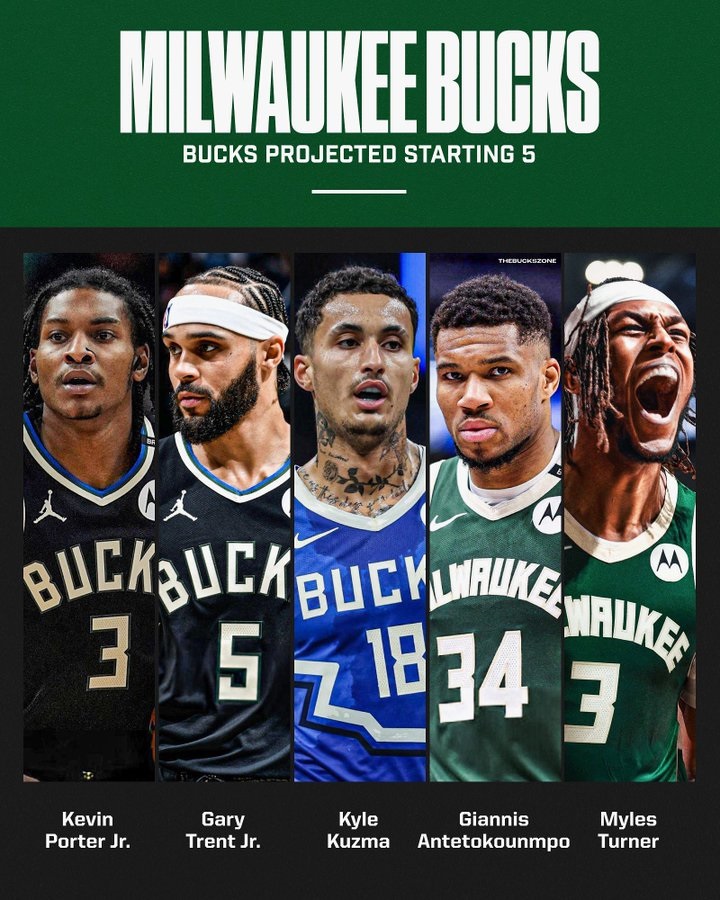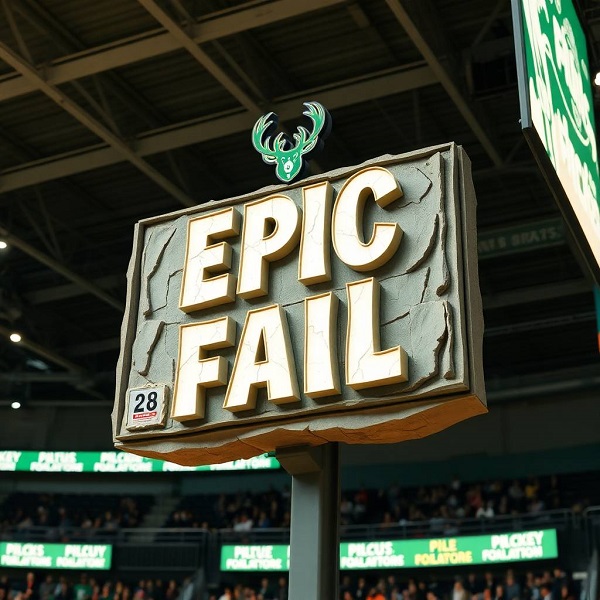The Milwaukee Bucks enter the 2025-26 NBA season as one of the league’s most intriguing enigmas. After a tumultuous 2024-25 campaign marked by injuries, inconsistent play, and a first-round playoff exit, the Bucks made bold moves in the offseason. They waived Damian Lillard following his Achilles injury, stretching his contract to create cap space, and signed former Indiana Pacers center Myles Turner to pair with superstar Giannis Antetokounmpo. This shift signals a return to “Point Giannis” as the offensive focal point, surrounded by shooters and defenders. But with roster turnover, questions about depth, and lingering trade rumors around Antetokounmpo, predictions for the Bucks vary wildly—from playoff contenders to potential lottery dwellers.
Win Total Projections: A Middling Outlook with Giannis-Sized Upside
The consensus among oddsmakers and analysts pegs the Bucks’ regular-season win total at around 42.5, a slight dip from their 48 wins last year. This reflects the loss of Lillard’s scoring punch and concerns over team chemistry, but it also underscores faith in Antetokounmpo’s ability to carry the load. Betting sites like BetMGM and FanDuel list the over/under at 42.5, with juice leaning slightly toward the over at -120 in some spots. VSiN projects a similar range, emphasizing how far Antetokounmpo can drag a “barren” roster, especially since Giannis hasn’t really added any skills.
Optimistic takes suggest Milwaukee could push toward 45-50 wins if healthy. Doc’s Sports highlights the Bucks’ seven straight seasons with 45+ wins, recommending bets on over 45 at +152 or even 50+ at +410, citing their talent for beating lesser teams. CBS Sports echoes this, pointing to Antetokounmpo’s late-2024-25 surge (29.3 points, 11.4 rebounds, 7.9 assists over 21 games) and additions like Gary Trent Jr., Taurean Prince, and A.J. Green for spacing. On X, fan Nathan Marzion predicts 53-29, dismissing exact wins as long as they secure a top-6 seed.
Pessimists, however, see a floor of 37-40 wins if injuries strike or cohesion falters. Odds Shark notes declining winning percentages and a weakened depth chart, making the under tempting. DraftKings projects a baseline of 48 wins with Antetokounmpo healthy but warns of a 37-45 roster without him. X user Mr Ass advises taking the under on 42.5, predicting Antetokounmpo averages 27+ PPG but plays fewer than 65 games.
Overall, the win total hinges on health and adaptation. If the Bucks gel early, they could exceed expectations; if not, a rebuild looms.

Seeding and Playoff Predictions: Play-In Bound or Top Contender?
In the Eastern Conference, predictions place the Bucks as a mid-tier team, likely fighting for seeds 5-8. ESPN ranks them in the middle of the pack, noting their top-3-point shooting percentage last season but low volume in attempts. SB Nation sees them at No. 9 in the East, behind rising squads like the Knicks, Cavaliers, and Magic. The Guardian predicts a competitive East but doesn’t spotlight Milwaukee as a top threat.
Playoff odds are favorable at -215, but conference title hopes are long at +1900. FanDuel gives them +750 to reach the East Finals and +1800 for the NBA Finals. Sporting News projects them as a second-round exit at best, citing injuries to stars like Tyrese Haliburton and Jayson Tatum opening the East but not enough for Milwaukee to capitalize fully.
Fan predictions on X are more varied. Alex Sage sees them as a “competitive 2nd round exit,” while DRich calls a top-6 seed “very likely” with Turner’s athleticism boosting defense. Others like Nathan Grubel rank them 11th, fearing a Giannis absence derails everything. Bold outliers include Taylor predicting a 2026 ring after a 6th seed, or Snatch forecasting a Finals appearance. Some, like Zach Langley, predict they miss the playoffs entirely due to depth issues.
The East’s perceived weakness (injuries to Boston, Indiana) could help, but Milwaukee must outperform rising teams like Detroit, Orlando, and Atlanta.
Award Contenders: Giannis in the Spotlight
Antetokounmpo dominates award talk. Multiple sources predict him as an MVP contender, needing 8+ assists and a top-4 seed. SI.com calls him a “long shot” but builds a case around his dominance. ClutchPoints offers bold predictions like Giannis leading in scoring, rebounding, and assists for Milwaukee. On X, fans like Snatch and Infinite Sports see him winning MVP outright. It is clear that this regular season the Bucks have been built to support Giannis’ stat chasing again.
Other breakout candidates include A.J. Green (X-factor per Infinite Sports) and Gary Trent Jr. (highest 3P% per Marzion). Turner is hailed as “10x better than Lopez” for defense.
Reasons for Optimism: Defense, and Spacing
The Bucks’ ceiling starts with Antetokounmpo, whose commitment quells trade speculation. Turner’s addition addresses rim protection and athleticism, allowing slower-paced, defensive games. Shooters like Trent, Prince, and Green provide spacing, potentially boosting 3-point volume. Late-2024-25 streaks (8-1 runs) show resilience. Social media users like Ryan Koller predict 55 wins with average defense from all rotations.
A weakened East (Celtics, Pacers down) offers opportunity. Hoops & Headlines predicts a better record than last season. But essentially the Bucks look like they are aiming for an impressive regular season knowing well that they are going to be smoked in the playoffs again.
Reasons for Pessimism: Depth, Injuries, and Trade Drama
Depth is a glaring issue—projected rotations include Kevin Porter Jr., Cole Anthony, and Kyle Kuzma, raising chemistry concerns. Antetokounmpo’s health is pivotal; without him, wins plummet. Trade rumors persist, with Fadeaway World speculating he stays but unrest lingers. X user Maltman predicts 40-45 wins and an early exit, fearing mediocrity.
Offense could stagnate without Lillard, and rebounding suffers without key bigs. Some like The House that Kami Built see low seeding due to missed games.
Fan Sentiments: Hope Mixed with Realism
On social media, Bucks fans remain loyal. Michael Redd reflects on the 2024-25 disappointments but urges appreciating Giannis. Podcasts like Bucks University offer bold takes, including preseason reactions. Broader predictions vary, with some like Takes seeing a 7th seed and ECF run. Others, like DOM, rank them 5th in the East.
A Season of Uncertainty and Potential
The 2025-26 Bucks are a Giannis-led wildcard. Predictions lean toward 42-45 wins, a play-in spot, and MVP buzz for the Greek Freak, but success depends on health, defense, and buy-in. If they exceed expectations, a deep playoff run isn’t impossible in a wide-open East. If not, trade winds could blow stronger. Buckle up, Milwaukee—it’s going to be a ride. Milwaukee’s floor remains high, but their ceiling depends on rapid roster cohesion and finding an answer to close games when the postseason arrives.





